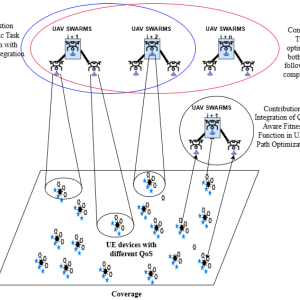China has recently made significant strides in the field of satellite technology by successfully testing its first low Earth orbit (LEO) broadband network. This groundbreaking development has the potential to revolutionize global communication and connectivity, particularly in remote areas. In this blog post, we explore the details of China’s LEO broadband network test and its implications for the future of satellite-based internet services.
The Advantages of Low Earth Orbit Satellites
Low Earth orbit satellites offer several advantages over their traditional geostationary counterparts. Positioned closer to Earth, LEO satellites provide lower latency, faster data transmission, and improved coverage. These characteristics make them ideal for delivering high-speed broadband services to areas lacking reliable terrestrial infrastructure.
China’s Pioneering Test at Sea
China’s test involved launching a LEO broadband network that provides internet connectivity to ships at sea. The experimental satellites, positioned in low Earth orbit, successfully established a network capable of delivering high-speed internet services to maritime vessels. This achievement showcases the potential of LEO satellite technology to bridge the digital divide in remote maritime regions.
Enhancing Global Connectivity
The successful deployment of China’s LEO broadband network holds tremendous promise for enhancing global connectivity. By leveraging LEO satellites, countries can extend internet access to underserved regions, connecting communities, and facilitating socio-economic development. The technology can bridge the digital gap and empower individuals and businesses with the benefits of online connectivity.
Challenges and Future Prospects
While the test marks a significant milestone, challenges remain in scaling up the LEO broadband network. These challenges include launching and maintaining a constellation of satellites, ensuring uninterrupted coverage, and managing signal interference. Nonetheless, as technology advances and costs decrease, the potential for widespread adoption of LEO satellite internet becomes increasingly feasible.
Competition in the Satellite Internet Space
China’s foray into LEO broadband networks comes amid growing global competition in the satellite internet sector. Other companies, such as SpaceX’s Starlink and OneWeb, are also actively deploying LEO constellations to offer high-speed broadband services worldwide. This competitive landscape is driving innovation and pushing boundaries in satellite technology, ultimately benefiting consumers with improved connectivity options.
Implications for Connectivity and Beyond
China’s successful test of a LEO broadband network at sea signifies a significant step forward in the realm of satellite-based internet services. As LEO constellations continue to expand, they have the potential to revolutionize connectivity not only for maritime applications but also for aviation, rural areas, and disaster-stricken regions. The global reach of LEO satellites holds promise for a more connected and digitally inclusive future.
Conclusion
China’s milestone achievement in testing a LEO broadband network at sea highlights the transformative potential of satellite technology in delivering high-speed internet services. By overcoming geographical barriers and providing connectivity to remote areas, LEO satellite networks can bridge the digital divide and unlock new opportunities for communities around the world. As advancements in satellite technology continue, we can anticipate an increasingly connected future where reliable internet access becomes a global norm.











